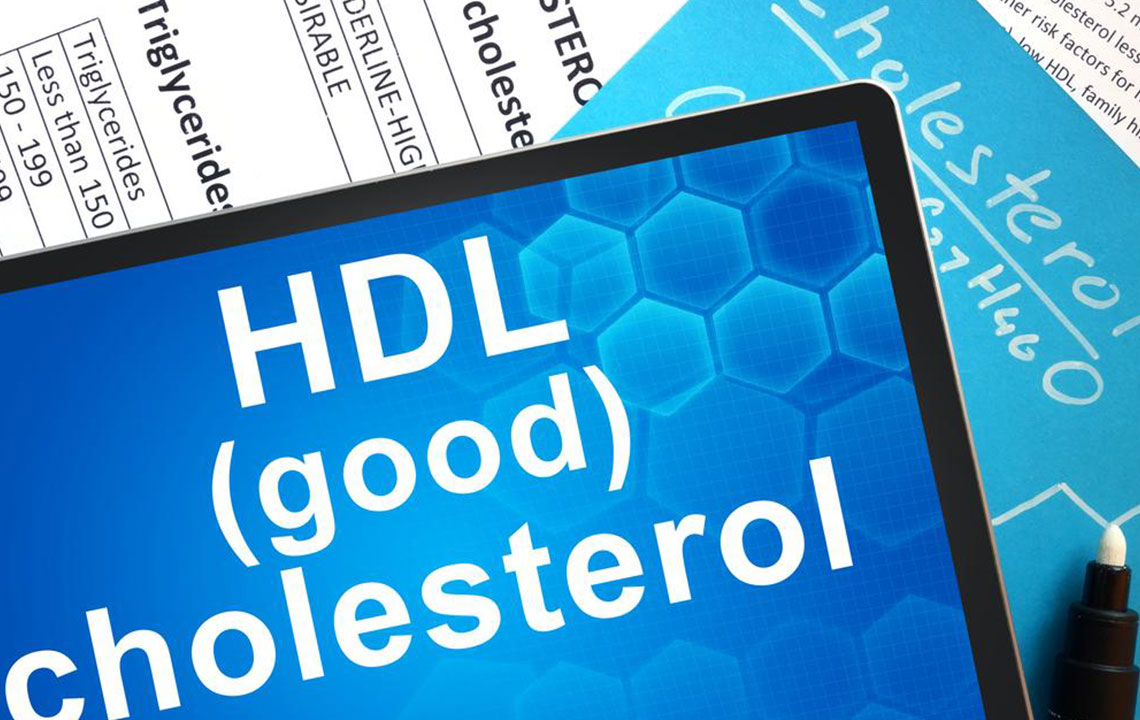Understanding HDL Cholesterol
The total cholesterol or the total blood cholesterol is a measure of HDL cholesterol level, LDL cholesterol level, and other lipid components.
Total cholesterol is not actually a type of cholesterol but a composite of the different types of cholesterol. Twenty percent of the triglyceride level plus the LDL and HDL cholesterol level score gives the total cholesterol score of a person.
For anyone who is over the age of 20, cholesterol levels should be checked every five years to keep a track record of health. The test that used to screen the cholesterol levels is known as the lipid profile, and it is recommended by experts that women above the age of 45 years and men above the age of 35 years should get frequent screenings done to check for lipid disorders.

The risk for heart disease is determined on the basis of the total cholesterol number by a doctor who can devise a medical health plan to lower the risk.
Overall, regular routine checkups, an active lifestyle, and a clean diet with the minimum intake of triglycerides are said to help maintain healthy cholesterol levels.
The aspects covered under the lipoprotein profile include the following.
- Total cholesterol
- LDL (low-density lipoprotein cholesterol, more famously known as “bad” cholesterol)
- HDL (high-density lipoprotein cholesterol, more commonly known as “good” cholesterol)
- Triglycerides (fats that are carried into the blood from the food that is consumed. Too much of alcohol, sugar or calories in the body get converted to triglycerides that are stored in the fat cells throughout the body.)
The test report shows all cholesterol levels in a measure of milligrams per deciliter of blood (mg/dL).
The results of the blood test for the lipid profile come in the forms of numbers. An interpretation of these numbers is given below.
The numbers predicted in the test are not the complete authority to predict the risk of any potential heart problems. They also cannot help formulate ways in which the predicted risk can be lowered. These numbers are simply part of a much a larger equation under which other factors like age, blood pressure, sugar levels, hormone profile, smoking habits, and use of medications are also accounted for. This complete information profile is used by the doctor to calculate the 10-year risk a person may be at for serious heart problems. Once the key areas have been identified, a health strategy may be developed to reduce the risk.
Types of Cholesterol
HDL cholesterol
HDL or high-density lipoproteins is known as “good” cholesterol, meaning that a high HDL cholesterol level relates to lower risk. HDL essentially protects the heart against heart disease by taking the bad cholesterol or LDL out of the blood and prevents it from building up within the walls of the artery.
HDL cholesterol levels lower due to factors like smoking, sedentary lifestyle, excess weight, type 2 diabetes, and some genetic factors. A high amount of blood triglycerides also points toward a lower HDL level and women generally have higher HDL cholesterol levels as compared to men.
The most common and proven methods of increasing the HDL cholesterol level include exercise and a statin medication.
Previously, doctors for many years evaluated HDL cholesterol levels using ranges of numbers. This method gave way to measuring risk in broader terms by evaluating HDL cholesterol levels with context to other risk factors like age, exercise, and regular diet, which are an important mark of a person’s health.
LDL stands for low-density lipoprotein and is known as “bad” cholesterol that builds up on the walls of the arteries, thereby increasing the chances of a person getting a heart disease. A lower LDL number means that there is a lower risk of heart disease.
A figure of 190 or more is considered to be a very high LDL level, and most doctors prescribe immediate lifestyle changes along with statins that are medicines to lower cholesterol levels.
Triglycerides are a form of fat that are stored throughout the body as well as the food. High triglyceride levels have always been linked to a high risk of coronary artery disease. Triglycerides are categorized according to the risk they pose in the following manner.
Triglycerides that are within the range of 500 or higher are considered very high: between 200-499 is high, 150-199 is considered mildly high, and less than 150 is considered normal.
Even if the LDL is lower than 190, a statin may be recommended. Having considered the 10-year risk, a doctor can recommend a specific percentage by which a person needs to lower their LDL risk through lifestyle changes that include exercise, diet, and any medication as required.

